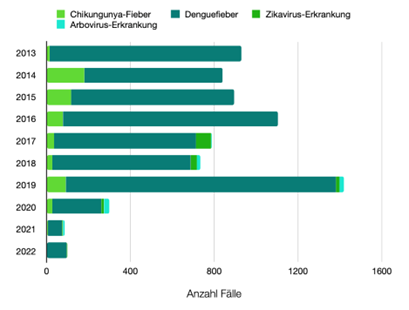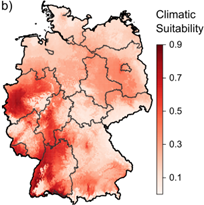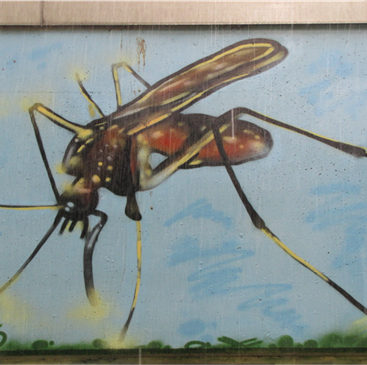Asian tiger mosquito in cities: Foundations for urban climate adaptation measures and health prevention
Mosquitoes as disease vectors
The Asian tiger mosquito (Aedes albopictus, Diptera, Culicidae) is a competent vector for arboviruses such as dengue virus, chikungunya virus, West Nile virus and Zika virus. The invasive species can quickly adapt to new environmental conditions and is continuously spreading towards Central Europe. Germany also has climatically favourable conditions for the mosquito to settle. First settlements have already occurred, e.g. in Baden-Württemberg, Hesse, Berlin. The disease vector is also regularly introduced into Bavaria. There is justified concern that long-term colonisations will also occur in Bavaria, especially when climate change conditions are taken into account.

Cities in climate change as possible habitats for mosquitoes
Especially in urban environments, the Asian tiger mosquito is frequently found. Urban heat islands, the development of urban green and blue, but also infrastructural changes pose a particular challenge in this regard, as they could create habitat for this mosquito. For example, while the presence of air conditioning reduced exposure to Aedes albopictus bites in France, the condensation that forms on the exterior of the facility can in turn provide breeding habitat for mosquitoes. The introduction of green roofs as innovative urban green infrastructure can be hindered by the presence of pests such as mosquitoes. In the case of green roofs on tall buildings, the high wind exposure could prevent mosquitoes from settling. Although more water plants indicate a higher mosquito density, the promoted so-called floodwater mosquitoes such as Aedes vexans have a low competence to transmit diseases.
Thus, many questions arise that should be clarified by a literature study:
1. which specific environmental conditions in urban areas (built structures, greenery, infrastructures, stormwater management instead of sewerage) favour the settlement of the Asian tiger mosquito?
2. which urban areas are particularly affected and what abundances are reached?
3. What urban planning measures can counteract settlement in the long term?
4. What role does the management of urban spaces play (e.g. maintenance of urban drainage, green space maintenance)?
5. What (individual) human behaviours favour the settlement of the Asian tiger mosquito (e.g. installation of air conditioning systems)?
6. which specific environmental factors (temperature, precipitation) in urban areas favour the settlement of the Asian tiger mosquito?
What are the indications for the current development of mosquito populations in cities in Germany (increases/decreases)? 8.
8. which conditions must be fulfilled so that a real transmission scenario of human-pathogenic arboviruses can be assumed (especially with regard to infectivity, climatic conditions, vector density, flight radius, flight altitude)?
9. Which programmes/strategies for dealing with tiger mosquitoes in cities/urban development already exist and which can serve as best-practice examples?

